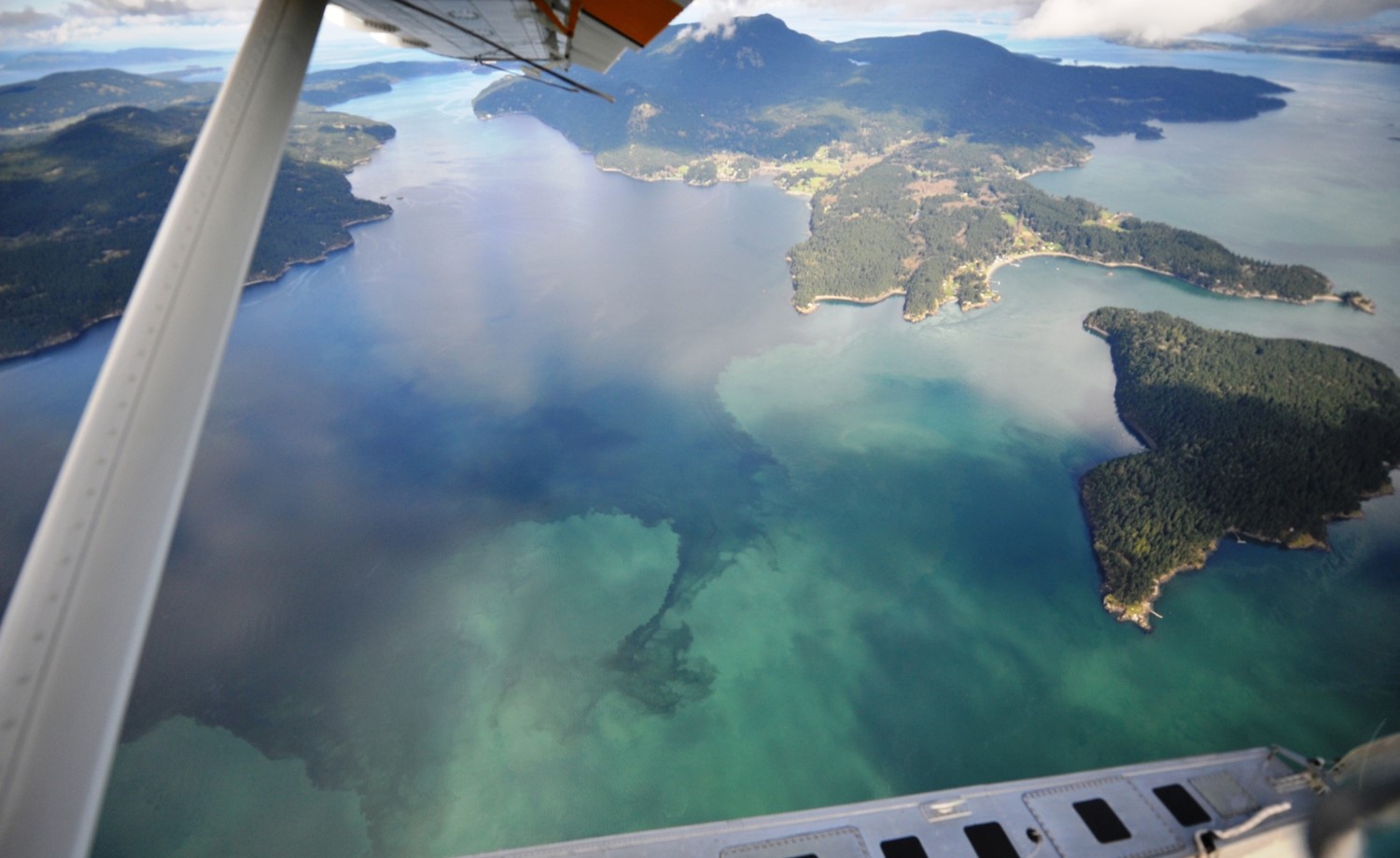By studying the effects of warmer marine water on the tiny plant-like organisms called phytoplankton, scientists at Ecology are learning how the Puget Sound ecosystem responds to climate change.
They did so when a mass of warm water nicknamed “the Blob” made its way to the Puget Sound in 2015. This unusually warm water gave scientists the opportunity to see what a world with warmer oceans might look like.
The Blob changed the timing and size of phytoplankton blooms significantly; spring blooms happened earlier than usual, and summer blooms were dramatically larger than in previous years.
Most of the marine food web depends on phytoplankton blooms happening at certain times. Because phytoplankton are a key source of energy, their availability affects the life cycles of marine creatures.
Ecology’s Senior Oceanographer, Dr. Christopher Krembs, tells us more.
“A lot of life cycles of invertebrates and fish are triggered by temperature. . . . for little larvae that come out of their eggs and for juvenile fish and other species, it is important that they find their food early on in their life cycle because most of the juveniles die if they don’t find optimal conditions," Krembs said.
If phytoplankton blooms don’t align with critical developmental stages of marine creatures like small fish and krill, the entire food web can suffer. A healthy marine food web is essential to regional efforts to recover salmon and Southern Resident Killer Whale populations, as well as to support the commercial, tribal, and recreational shellfish industries.
Krembs says that the data from 2015 will help scientists model climate change more accurately.
Krembs: “When you see a scenario, you become much better at predicting the future, because now you have environmental data that you can calibrate your models with. And so our predictions become better.”
More research on how a warming climate may affect Puget Sound ecosystems has already begun. To learn more, visit Ecology’s webpage about the Salish Sea Model.
Visit our flickr album for more related pictures.


